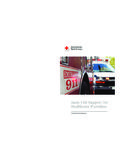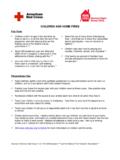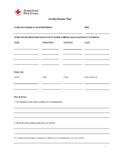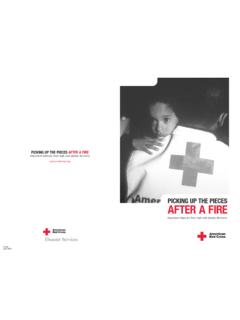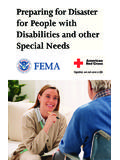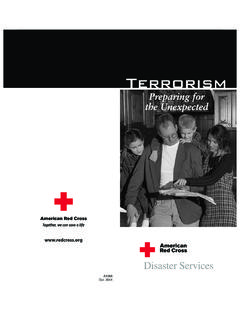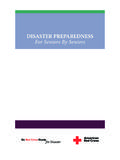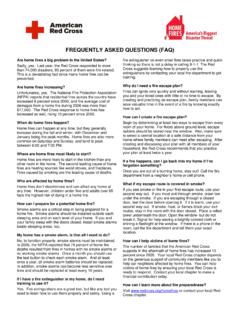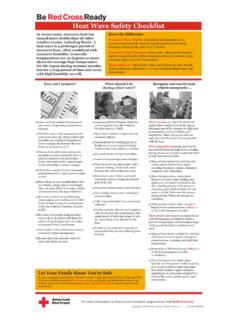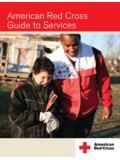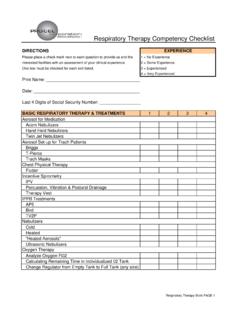Transcription of CPR/AED for Professional Rescuers and Health Care …
1 CPR/AED for Professional Rescuers and Health Care Providers HANDBOOKiv | CPR/AED for Professional Rescuers and Health Care ProvidersTABLE OF CONTENTSSECTION 1: THE Professional RESCUERThe Duty to Respond _____2 Preventing the Spread of Bloodborne Pathogens _____3 Taking Action _____5 Recovery Positions _____9 Summoning More Advanced Medical Personnel _____9 Moving a Victim _____10 Breathing Emergencies _____10 Giving Ventilations _____12 Airway Obstruction _____12 Cardiac Emergencies _____13 Cardiac Arrest _____15 CPR _____15 AEDs _____17 SECTION 2.
2 SKILL SHEETSR emoving Disposable Gloves _____21 Primary Assessment Adult _____22 Primary Assessment Child and Infant _____24 Recovery Positions _____26 Giving Ventilations _____27 Giving Ventilations Using a Bag-Valve-MaskResuscitator Two Rescuers _____28 Conscious Choking Adult and Child _____30 Conscious Choking Infant _____32 Unconscious Choking _____34 CPR _____36 Two- rescuer CPR _____38 Using an AED _____40 SECTION 1 - The Professional rescuer | 15 The Cardiac Chain of SurvivalThe four links in the Cardiac Chain of Survival are: Early recognition and early access to the EMS system.
3 The sooner someone calls 9-1-1 or the local emergency number, the sooner EMS personnel will take CPR. CPR helps supply oxygen to the brain and other vital organs. This helps keep the victim alive until an AED is used or more advanced medical care is defi brillation. An electrical shock, called defi brillation, may help restore an effective heart more advanced medical care. EMS personnel provide more advanced medical care and transport the victim to a hospital. For each minute CPR and defi brillation are delayed, the victim s chance for survival is reduced by about 10 ARRESTC ardiac arrest is a life-threatening emergency.
4 Causes of Cardiac ArrestHeart attack Electrocution Respiratory arrest Drowning Other conditions Causes of cardiac arrest in children and infants include: Airway and breathing problems. Traumatic injuries or accidents ( , motor-vehicle collision, drowning, electrocution or poisoning).A hard blow to the chest. Congenital heart disease. Sudden infant death syndrome (SIDS). Signs of Cardiac ArrestUnconsciousness No breathing No pulse CPRD elivered in cycles of chest compressions and ventilations, CPR circulates blood that contains oxygen to the vital organs of a person whose heart and breathing have stopped.
5 Summoning more advanced medical personnel 16 | CPR/AED for Professional Rescuers and Health Care Providersimmediately is critical for the victim s survival. If an AED is available, use it in combination with CPR and according to local protocols until more advanced medical personnel take at any time you notice an obvious sign of life, such as breathing, stop CPR and monitor the victim s CompressionsEffective chest compressions are essential for high-quality CPR. They circulate blood to the victim s brain and other vital organs.
6 The effectiveness of compressions can be increased if (Table 2): The victim is on a fi rm, fl at surface. Compressions are the proper depth. For an adult or a child, you keep your arms as straight as possible and your shoulders directly over your hands. For an infant, you position your hand over your fi chest fully recoils (comes all the way back up) after each compression. The compression rate is at least 100 per minute. CPR is performed without interruption. If CPR must be interrupted, do so for only a few 2.
7 Summary of Techniques for Adult, Child and Infant CPRA dultChildInfantHand positionHeel of one hand in center of chest (on lower half of sternum) with other hand on topOne hand on forehead and two or three fi ngers in center of chest (on lower half of sternum, just below nipple line)Compression depthAt least 2 inchesAbout 2 inchesAbout 1 inchesRateAt least 100 compressions per minuteVentilationsUntil the chest clearly rises (about 1 second per ventilation)Cycles (one rescuer )30 chest compressions and 2 ventilationsCycles (two Rescuers )30 chest compressions and 2 ventilations15 chest compressions and 2 ventilationsSECTION 1 - The Professional rescuer | 17 Two- rescuer CPRWhen an additional rescuer is available, perform two- rescuer CPR.
8 One rescuer gives ventilations and the other performs chest compressions. AEDsAEDs are portable electronic devices that analyze the heart s rhythm and can provide defi brillation, an electrical shock that may help the heart to re-establish an effective rhythm (Figure 10). Using an AED AdultWhen cardiac arrest occurs, use an AED as soon as it is ready to use. If CPR is in progress, continue until the AED is turned on, the AED pads are applied and the AED is ready to analyze the heart an AED Child or InfantAEDs equipped with pediatric AED pads are capable of delivering lower levels of energy appropriate for infants and children up to 8 years old or weighing less than 55 pounds.
9 Use pediatric AED pads and/or equipment, if available. If pediatric-specifi c equipment is not available, an AED designed for adults can be used on children and infants. Always follow local protocols, medical direction and the manufacturer s Precautions When operating an AED, also follow these general precautions:Do not use alcohol to wipe the victim s chest dry. Alcohol is fl not touch the victim while the AED is analyzing. Touching or moving the victim may affect shocking a victim with an AED, make sure that no one is touching or is in contact with the victim or any resuscitation equipment.
10 Do not touch the victim while the device is defi brillating. You or someone else could be not defi brillate someone when around fl ammable or combustible materials, such as gasoline or free-fl owing not use an AED in a moving vehicle. Movement may affect the analysis. Do not use an AED on a victim wearing a nitroglycerin patch or other medical patch on the chest. With a gloved hand, remove any patches from the chest before attaching the device. Never place AED pads directly on top of medication not use a mobile phone or radio within 6 feet of the AED.
